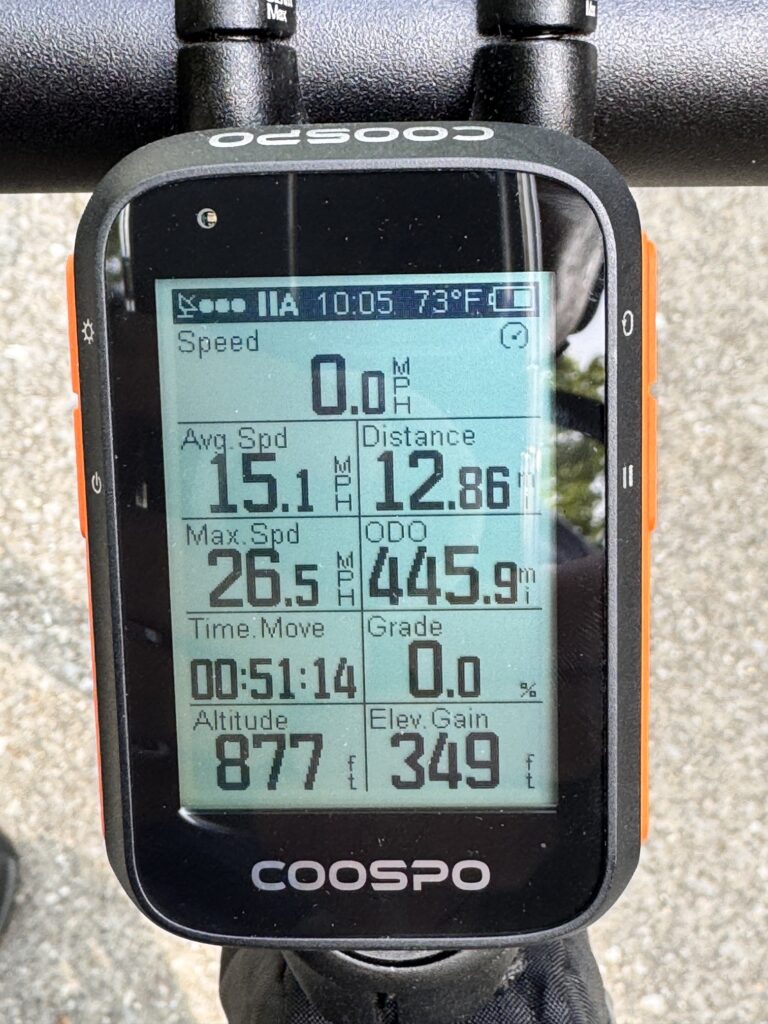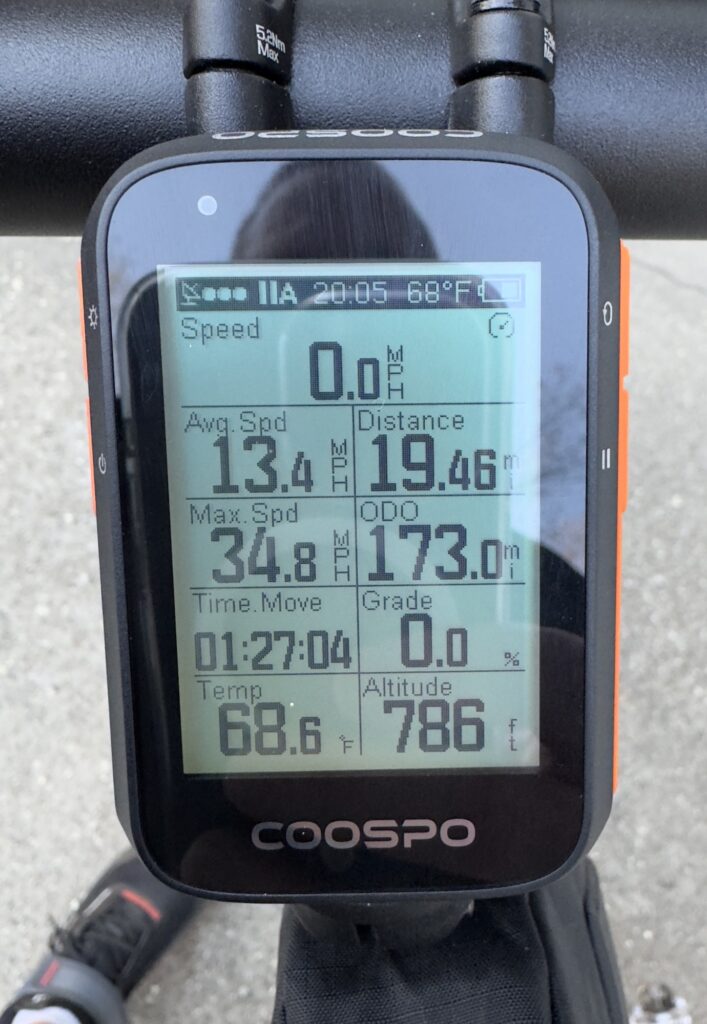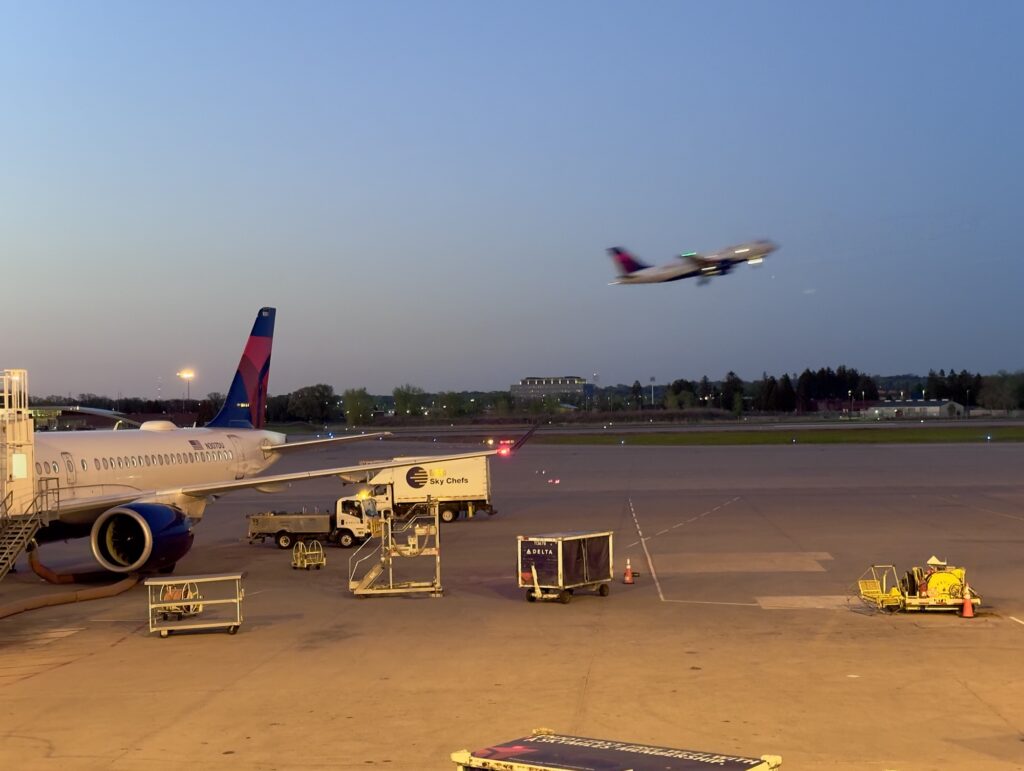Spent all morning trying to figure out where a network call was originating from, only to discover it’s likely in third party code.
Author: mike
Bike training, week 14. I went on 3 rides this week totaling 95.7 miles.
Yesterday I completed a 54 mile ride. The intent was to hit an even 50. However, due to a lack of proper route planning I would have done closer to 60…if I hadn’t run out of daylight. I got a ride the rest of the way home at 9:30 last night.
For the first time I feel like I could do 75 miles if I needed to, so that’s a good place to be. The charity ride (details forthcoming) is on August 23rd, so I still have some time.
We just dropped off the kids for a week at camp. What did we do first during our week without parental responsibilities? Why go to Costco, of course.
After my bike ride this morning, I noticed my gravel tires are starting to wear out. I guess that happens after putting almost 700 miles on them. I might be able to squeeze 1000 miles before buying new ones.
In a few weeks I’ll starting avoiding gravel roads and be switching back to the OEM slick road wheels (which I took off the day I bought the bike). I’m starting much longer rides and it’ll be nice to reduce rolling resistance.
Bike training, week 13. We went camping this past weekend, so instead of fitting in a big ride, I ended up biking the 27 miles to the campsite. Yesterday’s 27 miles back will go on this week’s tally, but I was excited to average over 15 mph on the return.
Overall, I managed a total of 73.5 miles last week.
I gotta say, it was a lot easier remembering to post on Fridays when I used Saturday – Friday as a “week”. Since switching to the more common Monday – Sunday, I’m constantly posting late.
Bike training, week 12. After spending a couple of weeks in the mountains hiking more than biking, I got back in the saddle last week and rode 82.7 miles. I surpassed 500 miles on the new bike in the process.
On Saturday, I went on a 46 mile ride and that felt pretty good to complete. I have 8 more weeks of training before the big 75 mile ride. Let’s goooo!
So much of my early interaction with computers was shaped by Bill Atkinson. I can’t count the number of hours I spent on our Mac 512Ke in MacPaint (the first app I ever used) and later in HyperCard. The way those tools captivated me has strongly influenced my eventual career path as an app developer.
Bill is a legend. RIP.
Bike training, week 9. I was rained out a couple of times this week, but managed to fit in 4 rides totaling 90.9 miles.
Averaged 15.1 mph on my latest ride, which is equivalent to three weeks ago, except this time my average heart rate improved from 151 bpm to 143 bpm.

I’m in this stage now though where my natural workout is to go out for a Zone 2 ride and just kind of cruise at around 13 mph. I’m finding that I need to force myself to try and go faster, otherwise I won’t make progress toward my goal.
75 miles takes a long time to ride, and the difference between a 13 mph average speed and a 15 mph average is about 45 minutes saved overall. I really want my cruising speed to be 15 mph before I do the long ride and need to work up to that.
Played around with running local LLMs this weekend. First I took the harder path of setting up ollama in Docker and n8n. I still have a lot to learn about n8n, but that has a ton of potential to do cool things.
Then I switched gears slightly and went with the easy route of trying LM Studio. That has been nice so far. Using a few sample prompts about Swift, SwiftUI, and TCA, I’m finding that qwen-coder 2.5 32b is a pretty effective model to work with.
I started by installing on a MBP M1 Max, and that was okay. However, the Mac Studio M3 Ultra generates about 3 times more tokens per second than an M1 Max, and is a much more pleasant experience.
Building up slowly but surely. Last weekend was a 28 mile ride. Today I did 35 miles. I’ve biked about 400 miles so far this spring. Feeling pretty good!
Bike training, week 8. I explored two new areas on rides this week, and found a campground that looks pretty cool.
Skipping my usual Friday ride, even though the conditions are perfect this morning, because I’m sore from playing an hour-long scrimmage with my daughter’s soccer team. Who would have thought running and kicking muscles would be so much different than peddling muscles?
Went on 5 rides for a total of 71.2 miles.
Bike training, week 7. The weather sucked this week. If I wasn’t getting rained out, I was battling 10-15 mph headwinds and wind chills in the 30s.
Still managed to go out on 3 rides and try some different routes. Total distance: 38.4 miles. Most recent ride average speed was 11.9 mph.
Bike training, week 6. I’m back from traveling and the weather’s been good, so I fit in 6 rides this week for a total of 75.1 miles. This week I thought a big milestone would be passing 200 miles on the new bike, which I did, but now I’m already almost to 250 so I find myself looking ahead to new milestones instead.
I pushed it today, staying in Zone 4 for most of the 50 minute ride. I somehow managed to boost my average speed to 15.1 mph, my fastest average yet.
Bike training, week 5. It was another travel week, but I managed to squeeze in 2 rides for a total of 29.6 miles.
Average speed on the most recent ride was 13.4 mph, with a fun max speed of 34.8 mph.

After getting back from Chicago four days ago, I’m heading out again to the west coast today for a work offsite. Had a 3 hour layover at MSP, so I walked a loop of the airport–about 1.7 miles.

Finally got backups setup on the Mac Studio. Had to expand the Time Machine volume on the TrueNAS server from 4TB drives to some spare 6TB drives I had on a shelf. Gave me just enough extra space to backup another Mac.
Pro tip: Keep your Time Machine backups on separate drives from the rest of your network storage. A handful of Macs backing up every hour really consumes a ton of iops. You don’t want that slowing down the rest of your network storage.
Bike training, week 4: I spent most of this week at Deep Dish Swift, and the weather wasn’t too cooperative otherwise.
I managed to fit in 2 rides though, totaling 35.7 miles. Latest ride average speed was 10.6 mph (took a gravel route). You haven’t lived until you’ve bombed down a gravel road at 25+ mph…so much fun.
Bike training, week 3: I went on 5 rides this week totaling 69.8 miles. Latest ride average speed was 13.2 mph.
I’m starting to add a 20+ mile weekend ride to the mix to help with endurance.
I started training toward a new goal today. For the past couple years, I’ve had in the back of my mind that I’d like to do a century bike ride. The thing is, I’m in nowhere near the shape to ride 100 miles in a day, and my mountain bike isn’t going to cut it either. I did a 50 mile ride with it years ago, but full suspension bikes are just too heavy, and don’t have road gearing or tires.
After a false start last summer, a few weeks ago I decided now was the time to give it a serious shot. I ordered an endurance road bike, which will be ready soon. Today was one of the first days that was warm enough (45°) to go on a ride. Even though I don’t have the new bike yet, I took the mountain bike out. I’m pretty rusty, but it felt great to get out there.
I’m hoping that by posting here (maybe at the end of every week) will keep me motivated, so here goes.
Week 1: 12 miles, average speed 10.1 mph.
April 10th, and we’re still getting snow flurries outside. Can’t wait for it to start warming up tomorrow.